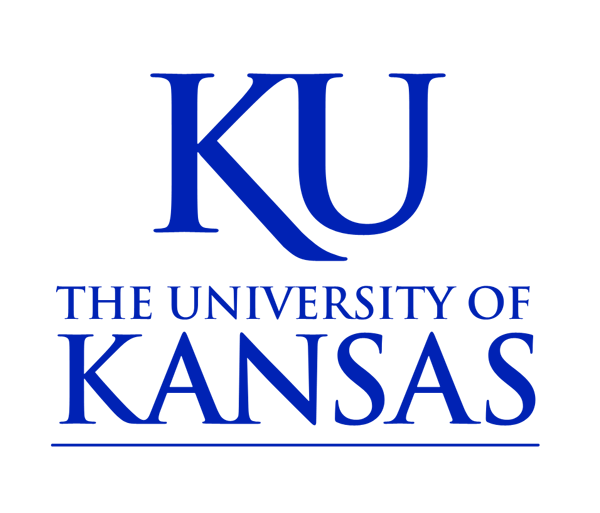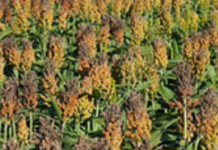From the Office of Public Affairs | http://www.news.ku.edu
Headlines
KU researchers part of program to give communities equal voice in switch to renewable energy
LAWRENCE — Researchers from the University of Kansas are part of a multi-institutional partnership to help ensure the United States’ ongoing transition to renewable energy and low-carbon technologies is just and provides equity and opportunities for communities on the front lines of the climate crisis. The project, titled Just Energy Transitions and Place, is funded by a three-year, $500,000 grant from the Alfred P. Sloan Foundation.
Mike Haddock will serve as interim faculty director for University Press of Kansas
LAWRENCE — The University Press of Kansas Board of Trustees, composed of the provosts from each of the six Kansas Regents institutions, has appointed Mike Haddock, associate dean for research, education and engagement at K-State Libraries, to serve as the interim faculty director of the University Press of Kansas (UPK). Haddock will continue his role as associate dean at K-State Libraries in addition to serving as interim faculty director of UPK.
Asia-Pacific heritage conservation benefits from ‘cultural landscape’ approach
LAWRENCE — A University of Kansas professor of architecture has co-edited a new book about the success and practices of Asia-Pacific heritage conservation efforts through the lens of honoring cultural landscapes, a movement traced back to a 1972 United Nations Educational, Scientific & Cultural Organization Convention that established the concept of World Heritage Sites.
Full stories below.
————————————————————————
Contact: Mike Krings, KU News Service, 785-864-8860, [email protected], @MikeKrings
KU researchers part of program to give communities equal voice in switch to renewable energy
LAWRENCE — Researchers from the University of Kansas are part of a multi-institutional partnership to help ensure the United States’ ongoing transition to renewable energy and low-carbon technologies is just and provides equity and opportunities for communities on the front lines of the climate crisis.
The expansion of wind, solar, hydropower, biofuels and transitions to low-carbon technologies has not kept the pace needed to respond to the climate crisis. To respond to that need, as well as to provide equity for the communities in the path of climate change, the Alfred P. Sloan Foundation has awarded a three-year, $500,000 grant to researchers from KU, Barry University in Florida, the University of Minnesota, University of Richmond and Pennsylvania State University. The team will work with communities to design a framework for creating policies that mitigate the impacts of climate change for a more just transition to renewables, while expanding renewable energy production in the most vulnerable communities with environmental justice considerations.
The project, titled Just Energy Transitions and Place, will examine how place-based considerations should be incorporated in federal or state energy transition initiatives. Understanding unique local considerations such as extreme weather events, environmental and health impacts from the energy sector, political dynamics, tribal land dispossession, land loss and historical inequities will guide the research team in developing a framework based on a broad set of factors.
“All too often, planning takes place without enough input for the people who will be affected by it most, those who live every day in the communities that will be guided by new policy,” said Ward Lyles, associate professor of public affairs & administration at KU. “We are honored to be a part of this team that will give residents, planners, citizens and leaders the chance to truly work together to get to the heart of what is needed and what is the best way to compassionately implement energy transition plans in a way that best serves all involved.”
Uma Outka, William R. Scott Professor of Law, and Lyles are KU’s members of the research team. They will join co-principal investigators Nadia Ahmad, law professor at Barry University, and Elise Harrington, professor of public affairs at the University of Minnesota. The team also includes Danielle Stokes of the University of Richmond and Jennifer Baka and Hannah Wiseman of Penn State.
Researchers will conduct interviews and focus groups in Kansas, Florida, Pennsylvania and Louisiana. Project funds will also be used to train and support graduate students from multiple institutions in law, public policy, urban planning and geography.
“This project will make critical contributions to our understanding of how different communities across the country experience energy transitions. It will cover a diverse array of geographies, and this multidisciplinary team brings a wide range of expertise in conducting research that is locally oriented,” said Evan Michelson, program director at the Sloan Foundation.
The research will help build on the growing body of literature on energy transition policy by identifying opportunities for cross-state learning in policy design and areas where place-based context must be considered for effective and responsive policymaking. The engagement of communities through interviews and focus groups will ensure the research is connected to the lived experience of communities facing energy transitions.
Outka and Lyles previously collaborated to organize a conference at the KU Commons on the topic of “Finding Justice in the Low-Carbon Transition,” and Lyles is the director of the Center for Compassionate & Sustainable Communities at KU, with which Outka is affiliate faculty. Both have made significant contributions in energy, law, planning and justice as part of their research careers, as well as exploring how cities can switch to a low-carbon grid, corporate renewable energy pledges, how cities can effectively start adaptation to climate change and how compassion should be an essential part of public planning.
“We are looking forward to collaborating as an interdisciplinary team to learn as much as we can about how a rapid clean energy transition can serve local communities,” Outka said.
-30-
————————————————————————
The official university Twitter account has changed to @UnivOfKansas.
Refollow @KUNews for KU News Service stories, discoveries and experts.
Tweets by KUnews
————————————————————————
Contact: Jill Hummels, Office of the Provost, 785-864-6577, [email protected], @KUProvost
Mike Haddock will serve as interim faculty director for University Press of Kansas
LAWRENCE — The University Press of Kansas Board of Trustees, composed of the provosts from each of the six Kansas Regents institutions, has appointed Mike Haddock, associate dean for research, education and engagement at K-State Libraries, to serve as the interim faculty director of the University Press of Kansas (UPK). He will step into a leadership role held by Kevin L. Smith since January 2021. Smith served as the dean of KU Libraries since 2016 but recently accepted a position at Colby College in Waterville, Maine.
Haddock will continue his role as associate dean at K-State Libraries in addition to serving as interim faculty director of UPK.
“I am truly excited by the opportunity to serve as interim faculty director,” Haddock said. “I look forward to interacting with the high-quality University Press of Kansas staff and with the Board of Trustees of the Press.”
Haddock, a respected authority on Kansas botany, has written or co-written three award-winning books with UPK.
“On behalf of the trustees, I welcome Mike’s leadership of UPK,” said Barbara A. Bichelmeyer, chair of the UPK board of trustees and KU’s provost and executive vice chancellor. “His background as a UPK author coupled with his long-standing roles as a K-State Libraries’ faculty member and administrator will serve UPK well.”
In its 76th year of publishing excellence, UPK will continue to explore opportunities to build upon its collection of open access digital publications under Haddock’s leadership. The press specializes in works on American politics, military history and intelligence studies, American history, environmental policy and history, American studies, film studies, law and legal history, Native American studies, and books about Kansas and the Midwest.
Visit the University Press of Kansas website to learn more.
University Press of Kansas Board of Trustees
· Jill Arensdorf, provost and vice president for academic affairs, Fort Hays State University
· Barbara Bichelmeyer, chair of the UPK trustees, provost and executive vice chancellor, University of Kansas
· Shirley Lefever, executive vice president and provost, Wichita State University
· Howard Smith, provost and vice president for academic affairs, Pittsburg State University
· Charles Taber, provost and executive vice president, Kansas State University
· Gary Wyatt, interim provost and vice president for academic affairs, Emporia State University
About Mike Haddock
Professor Michael “Mike” Haddock serves as associate dean for research, education and engagement at K-State Libraries. He was born and raised in Beloit and spent a year in Austria with AFS Intercultural Programs after graduating from high school. He attended Kansas State University where he earned a bachelor’s degree in modern languages, spent a year studying at Justus Liebig University in Giessen, Germany, then completed 36 credit hours as a special student in agriculture. Following graduation from K-State, he managed his family’s farming operation in north-central Kansas before earning a master’s in library science at Emporia State University. After working as agriculture librarian at Texas A&M University, he joined K-State Libraries in 1989, serving as agriculture librarian and later as chair of the Sciences Department.
Haddock has served as director of the United States Agricultural Information Network, chair of the executive board of the international Agriculture Network Information Center, president of the Kansas Native Plant Society and president of the Friends of Konza Prairie. In 2005, Haddock was recipient of the inaugural Brice G. Hobrock Distinguished Faculty Award presented by the Friends of the K-State Libraries. The Kansas Native Plant Society presented Haddock with the Stephen L. Timme Excellence in Botany Award in 2013.
In 1996, Haddock created the Kansas Wildflowers and Grasses website (www.kswildflower.org). The site has grown to include information and nearly 8,730 identification photos for 1,018 species of forbs, grasses, sedges, trees and other woody plants found growing in Kansas. Haddock’s first book, “Wildflowers and Grasses of Kansas: A Field Guide,” was named a 2006 Kansas Notable Book by the Kansas Center for the Book and was selected by the State Library of Kansas as one of the 150 Best Books on Kansas in celebration of the state’s 2011 sesquicentennial. His second book, “Kansas Wildflowers and Weeds,” co-written with Craig Freeman and Janét Bare, was named a 2016 Kansas Notable Book and received the Jan Garton Prairie Heritage Award. Haddock’s third book, “Trees, Shrubs, and Woody Vines in Kansas,” co-written with Craig Freeman, received the Author’s Award of Excellence from the Midwestern Chapter of the International Society of Arboriculture in 2020. All three books are published by the University Press of Kansas.
-30-
————————————————————————
Subscribe to KU Today, the campus newsletter,
for additional news about the University of Kansas.
http://www.news.ku.edu
————————————————————————
Contact: Rick Hellman, KU News Service, 785-864-8852, [email protected], @RickHellman
Asia-Pacific heritage conservation benefits from ‘cultural landscape’ approach
LAWRENCE – It has been a generation now. Long enough, Kapila Silva believes, to pronounce the “cultural landscape” approach, the broad-minded historic preservation efforts of the United Nations Educational, Scientific & Cultural Organization, better known as UNESCO, a success.
That is the bottom line of the wide-ranging new book co-edited by the University of Kansas professor of architecture, titled “The Routledge Handbook of Cultural Landscape Heritage in The Asia-Pacific.”
The book’s introduction, written by Silva and his Australian heritage expert co-editors/writers Ken Taylor and David S. Jones, traces the “cultural landscape” movement back to a 1972 UNESCO Convention that established the concept of World Heritage Sites.
UNESCO’s World Heritage Committee in 1992 introduced the construct of “cultural landscapes” as a category of World Heritage sites.
Silva said the latter approach recognizes “those environments that may not have a monumental type of architecture. They’re more vernacular, large-scale historic environments where nature and culture come together to establish a place for particular society. Those are important places of heritage for people, expressing their culture multidimensionally. The introduction of the notion of cultural landscape made a paradigm shift in the heritage conservation across the world, helped to move away from Euro-centric ways of thinking about cultural heritage, assisted in overcoming the compartmentalization of heritage into different types and facilitated the recognition of many historic environments in the Asia-Pacific as unique expressions of their cultures and, therefore, worthy of conservation.”
The editors set the stage for 30 chapters by 38 different authors/co-authors, including Silva, that explore how the guidelines set out in UNESCO’s foundational documents have played out across the Asia-Pacific region in the last three decades.
There are case studies, for example:
1. the Panchkroshi pilgrimage route that links more than 100 temples along the Ganges River in Varanasi, India
2. the ecologically rooted struggles of the Mohana people of boat-dwellers on Pakistan’s Lake Manchar
3. the role of the community in preserving ninth- through 13th-century temple sites in and around the ancient capital city of Bagan, Myanmar.
Silva’s KU colleague Nilou Vakil, associate professor of architecture, contributed a chapter on the Persian Qanat, a 2,000-plus-year-old system of underground aqueducts in present-day Iran.
Each of these is an example of a cultural landscape and of this specific approach to heritage, in which preservationists sought to move beyond a Eurocentric focus on preserving monuments (such as castles) and to consider instead how significant structures were integrated into the land and best preserved by their connection to the people in the area.
In his chapter, Silva wrote about how the cultural landscape approach could be instrumental in establishing clear nexus between the tangible cultural heritage (artifacts, buildings and settlements) and the intangible cultural expressions (cultural practices, belief systems, arts and crafts) in historic cities in the Asian context. He discussed the concept of “city as mandala,” as seen in the Nepalese city Bhaktapur, as an example in which belief systems organize the physical settlements and cultural practices cyclically enact the embedded or hidden spatial and societal order.
There, he wrote, “It is possible to identify smaller spatial settings with aniconic shrines (stone markers and flagstones), minor shrines, votive stūpas, and stone mandalas (small, ornamented octagonal stone structures, representing different mandalas) associated with a pantheon of myriad deities, along with wayside resting places, performing stages, street markets and the like. Ordinary daily life in the neighborhood unfolds in these settings.”
He said, “The idea of the mandala is that laying on the landscape is a kind of a belief system, and people put certain markers, boundaries, borders and things like that to organize the settlement. Sometimes you can see them, and sometimes you cannot see them, but that idea of the border or the marker is in people’s heads, and that understanding is observable from their activities, both ordinary and extraordinary, in the place. The cultural landscape approach helps us to see this ‘space-meaning-activity-time’ interaction in an environment, and then to figure out ways to safeguard these cultural expressions in a more holistic manner.”
This is not to say that the cultural landscape approach is without flaws or challenges. One of the contributors to the new handbook even writes that it is time to revisit some of the approaches that preceded the 1972 convention. But on balance, Silva said, it has been a success.
“Whether the local communities always understand the conservation of their cultural heritage that way, I’m not sure,” he said. “But at least the professionals who are responsible of taking care of cultural and/or natural heritage should … they are developing an understanding that we can’t isolate a building and simply look at it as something to be preserved. This is part of a larger system of cultural expressions. Thus, we need to have that broad understanding that the cultural landscape approach affords when we are working on heritage conservation.”
-30-
————————————————————————
KU News Service
1450 Jayhawk Blvd.
Lawrence KS 66045
Phone: 785-864-3256
Fax: 785-864-3339
[email protected]
http://www.news.ku.edu
Erinn Barcomb-Peterson, director of news and media relations, [email protected]
Today’s News is a free service from the Office of Public Affairs





